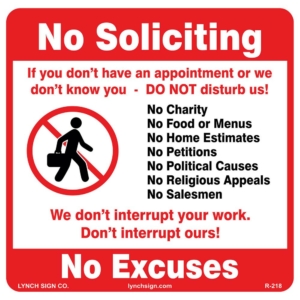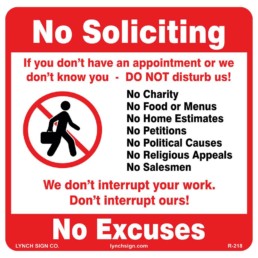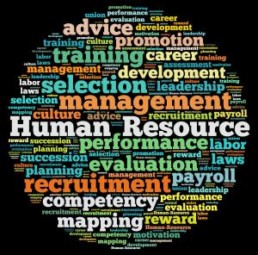Scrutinize Yourself – Look Very, Very Closely
Scrutinize Yourself – Look Very, Very Closely
by Peter Cotton, founder and president of Best Sales Talent, LLC
You’ve spent hours working on your resume to get it into tip-top shape and you are ready to conduct your job search, but wait, you aren’t quite ready. Before you set out to do a full-blown job search, it would be wise to do a full audit of all your social media outlets.
Facebook, Twitter, YouTube, Instagram – great places to share photos and videos and show comments from your friends and the world at large. It can be fun. It can be addictive. It can also be the reason why you won’t get that first interview for the job you really want. It might also be the reason why you won’t get an offer after you have met the employer.
According to a survey taken in 2007 by Ponemon Institute, a privacy think tank, 35% of hiring managers used Google to conduct online background checks on candidates, and 23% looked people up on social networking sites. About one-third of those searches lead to rejections, according to the survey. Care to guess what those percentages would be today if the survey was taken again? Some say that more than 85% of employers conduct online checks of those they are considering to hire. Because of the proliferation of social media in the last several years and its use by just about every generation, employers are using it to evaluate candidates every day.
Pretend that you are the hiring manager and look at your postings as if you were him (or her as the case may be) and ask yourself: “Is this person mature? Do I want this person as part of my team? Does he spend a lot of time every day posting stuff about every little thing he is doing or thinking? Will he be doing this at work?”
You might also look at your postings with the critical eye of a recruiter. Will he want to represent you to his clients? Too many photos of “partying” will give the recruiter an impression of you that will affect his bias. There are privacy settings on Facebook that allow you to prevent people from seeing your private photos unless you have given them access. Be sure the settings prevent anyone from seeing those private photos that might give a hiring authority or recruiter a bad impression of you.
Employers are very savvy. They will look at all your social media postings, as well who you are following, and it is likely they may make assumptions about what kind of a person you are – read that as: if you are the kind of person that will fit in at their company. They will never tell you the reason why you were not selected, but it could be that what you have “out there” about you is the reason why you don’t get an interview, or get hired.
Google yourself. See what comes up and be sure you know what it says, because an employer or recruiter is going to see it, too. If you see anything negative or unprofessional, be sure to do everything you can to remove it. Embarrassing or otherwise poor-impression videos of yourself on YouTube? Remove them.
If you have a LinkedIn profile take steps to be sure it is up-to-date and as complete as possible so it can tell your full employment story. Make it easy for recruiters and employers to reach you by placing your email address and phone number where it can be found – either in the section under contact info (located right under the number of contacts your have on your profile), or in the summary section. And finally, make certain that everything is spelled correctly. Have a friend look at it with a different set of eyes. A poorly written profile gives as bad an impression as an excessive number of party photos.
MRINetwork Survey Reveals Slow Adjustmentto the Candidate-Driven Market
MRINetwork Survey Reveals Slow Adjustmentto the Candidate-Driven Market
by Peter Cotton, founder and president of Best Sales Talent, LLC

Employers Increasing Feeling Pressure to Reevaluate Recruitment Efforts to Attract and Retain Talent
Philadelphia, PA (PRWEB) July 16, 2015
Workforce expansion is a priority for many companies throughout 2015, yet employers are struggling to recruit the best talent, according to new data from the 2015 1st Half edition of the MRINetwork Recruiter Sentiment Study. The biannual employment landscape survey, which polled 347 MRINetwork recruiters worldwide from the organization’s approximately 600 franchised offices, reveals the executive, managerial and professional labor market has become increasingly candidate-driven since 2011, and particularly in 2015. This workforce reality is becoming more apparent to top candidates who typically have multiple job offers and the advantage in the applicant process. Rejected job offers are on the rise and a growing number of companies are losing shortlisted candidates to other organizations. Survey data suggests employers are feeling the pressure of the candidate-driven market, forcing many to reevaluate their recruitment efforts, to attract and retain the specialized talent needed to move these organizations forward.
According to the survey, 90 percent of respondents defined the talent market for the executive, managerial and professional sector as candidate-driven, a 36 percentage point increase from the second half of 2011. As one recruiter noted, “The impact of the candidate-driven marketplace has been enormous especially over the course of the last year. The biggest concern is that candidates understand this, but companies do not.”
Because many companies still have not caught on, they continue to lose great candidates due to lengthy hiring practices, below-market salaries, weak branding efforts, and an inability to sell open roles and career advancement opportunities. Year-over-year survey data shows rejected job offers are growing, primarily because top performers are accepting offers with other companies (37 percent), and are being presented with disappointing compensation (25 percent). Additionally, the time between the first interview and the rejected offer is also shrinking, with a nine percentage point increase from the second half of 2013, for candidates that rejected offers within two weeks of the first interview.
“Companies have to move faster and understand that they are competing with other companies,” said a survey respondent. “They have to sell themselves. It’s not 'Why do you want to work here?’ It’s ‘Here’s why you should want to work here and what we can do for your career.”
Ultimately both the hiring landscape and approaches to talent management are shifting. Candidates are demanding more from prospective employers in their ability to articulate and provide opportunities for upward mobility, not just fulfillment of an open role. This is becoming clear as the length of time that employees stay with a company is shrinking. Data from the survey shows that it is not just Millennials who are changing job frequently. Gen-Xers are also doing a fair share of job hopping, signifying that job changes every two years may gradually be losing their stigma.
Additional highlights and conclusions from the MRINetwork survey:Almost half of recruiters (47 percent) indicated that the biggest obstacle to hiring is that employers still don’t realize great candidates will no longer accept the low salaries that were customary during the recession. Talented employees who were hired at bargain rates are moving on.
- According to one recruiter, “If clients aren’t competitive with compensation and culture, they will struggle to make strategic hires.
- ”Newly created positions continue to be the primary reason for job openings (51 percent), followed by vacancies from resignations (30 percent). One recruiter noted, “Company growth has forced the need to acquire more highly-skilled people that can grow with the organization and take on greater leadership positions.”
- Internal and external branding will continue to be important as companies face growing pressure to sell their value proposition to employees and candidates. “Clients are beginning to, but not across the board at all levels, recognize this is a candidate-driven market where the best talent need to be convinced their lives would be better if they were in that particular role,” said an MRINetwork recruiter.
Although the study results demonstrate the labor market is highly favorable toward top performers in the executive, managerial and professional space, recruitment and retention will continue to be challenging for overall hiring as the job market expands. A fundamental shift is taking place in the way in which candidates expect to be recruited, and companies will continue to lose out on the brightest talent if they are not able to adjust their hiring and retention practices.
About the MRINetwork Recruiter Sentiment Study:
The 2015 1st Half MRINetwork Recruiter Sentiment Study is based on a web-based survey, conducted between June 2-10, 2015, with a total of 347 recruiters responding. The survey was conducted by MRINetwork and compiled by Nysha King (215.282.8821 | nysha(dot)king(at)MRINetwork(dot)com), Media Relations Specialist for MRINetwork. This was the 8th edition of the study, which is conducted on a biannual basis. Parties interested in viewing the most recent report can download the study at MRINetwork.com/RecruiterSentiment.
About MRINetwork®:
Management Recruiters International, Inc., branded as MRINetwork®, is one of the largest executive search and recruitment organizations in the world. A subsidiary of CDI Corp. (NYSE:CDI), a global provider of engineering & technology solutions and professional staffing services, MRINetwork has approximately 600 offices in over 40 countries.
For the original version on PRWeb visit: http://www.prweb.com/releases/2015/07/prweb12851371.htm
IT IS IMPOSSIBLE FOR UNEMPLOYMENT EVER TO BE ZERO
IT IS IMPOSSIBLE FOR UNEMPLOYMENT EVER TO BE ZERO
Source: Bob Marshall
‘Unemployment’ is an emotional ‘trigger’ word...a ‘third rail’, if you will. It conjures up negative thoughts. But it is important to realize that, while we want everyone who wants a job to have the opportunity to work, unemployment can never be zero and, in fact, can be disruptive to an economy if it gets too close to zero. Very low unemployment can actually hurt the economy by creating an upward pressure on wages which invariably leads to higher production costs and prices. This can lead to inflation. The lowest the unemployment rate has been in the US was 2.5%. That was in May and June 1953 when the economy overheated due to the Korean War. When this bubble burst, it kicked off the Recession of 1953. A healthy economy will always include some percentage of unemployment.
There are five main sources of unemployment:
1. Cyclical (or demand-deficient) unemployment – This type of unemployment fluctuates with the business cycle. It rises during a recession and falls during the subsequent recovery. Workers who are most affected by this type of unemployment are laid off during a recession when production volumes fall and companies use lay-offs as the easiest way to reduce costs. These workers are usually rehired, some months later, when the economy improves.
2. Frictional unemployment – This comes from the normal turnover in the labor force. This is where new workers are entering the workforce and older workers are retiring and leaving vacancies to be filled by the new workers or those re-entering the workforce. This category includes workers who are between jobs.
3. Structural unemployment – This happens when the skills possessed by the unemployed worker don’t match the requirements of the opening—whether those be in characteristics and skills or in location. This can come from new technology or foreign competition (e.g., foreign outsourcing). This type of unemployment usually lasts longer than frictional unemployment because retraining, and sometimes relocation, is involved. Occasionally jobs in this category can just disappear overseas.
4. Seasonal unemployment – This happens when the workforce is affected by the climate or time of year. Construction workers and agricultural workers aren’t needed as much during the winter season because of the inclement weather. On the other hand, retail workers experience an increase in hiring shortly before, and during, the holiday season, but can be laid off shortly thereafter.
5. Surplus unemployment – This is caused by minimum wage laws and unions. When wages are set at a higher level, unemployment can often result. Why? To keep within the same payroll budget, the company must let go of some workers to pay the remaining workers a higher salary.
Other factors influencing the unemployment rate:
1. Length of unemployment – Some studies indicate that an important factor influencing a workers decision to accept a new job is directly related to the length of the unemployment benefit they are receiving. Just recently the government re-extended the eligibility for unemployment benefits from 26 weeks to as much as 73 weeks. Studies suggest that this reduces the incentive of the unemployed to seek and accept less desirable jobs.
2. Changes in GDP – Since hiring workers takes time, the improvement in the unemployment rate usually lags behind the improvement in the GDP.
Source: Bob Marshall
There Is No Indispensable Man
There Is No Indispensable Man
by Saxon N. White Kessinger, Copyright 1959
Sometime when you’re feeling important;
Sometime when your ego’s in bloom
Sometime when you take it for granted
You’re the best qualified in the room,
Sometime when you feel that your going
Would leave an unfillable hole,
Just follow these simple instructions
And see how they humble your soul;
Take a bucket and fill it with water,
Put your hand in it up to the wrist,
Pull it out and the hole that’s remaining
Is a measure of how you will be missed.
You can splash all you wish when you enter,
You may stir up the water galore,
But stop and you’ll find that in no time
It looks quite the same as before.
The moral of this quaint example
Is do just the best that you can,
Be proud of yourself but remember,
There’s no indispensable man.
Is This The Right Time To Make A Career Change?
The following was written by my departed friend, Ron Fink, former owner of Sales Consultants of New Haven and of the Lewis Group, with a slight modification in the last paragraph to personalize it to me and my own story.
---------------------------------------------------------------------------------------------------------------------

Whenever we contemplate a change in our present career we usually hear two voices raging back and forth within our mind:
One says: “Is this somewhere you want to be and something you want to do for the rest of your life?” If the answer is “NO,” the other voice says: “But I don’t know. Perhaps this is not the right time.”
And so the dialogue goes – while in our innermost spirit we know that “waiting for the right time” is often just another name for procrastination.
The truth is that there will probably never be a right time. Conditions will always be difficult. Obstacles will always be in your way, which you must overcome. You will always leave some piece of you behind, a piece of work that is unfinished, perhaps something you feel you have earned. It will always be a challenge, if you decide to launch out into the deep and mysterious destiny to which you feel called, by the dreams of your soul.
Yet a time comes in each of our lives when we know that we simply must accept that challenge. When we must go forward and do what we really want to do with our life, no matter how hard the choice, no matter how hard the times, and no matter how difficult the struggle in our minds may be. We know that there is always a chance that we may not succeed at it, but we know that we will never feel that we have really lived our life, until we at least try.
And, in some ways, it is a journey in which we cannot fail. Even if we are not able to pull it off, in a way that the world calls “successful”, we know that we will at the very least be a better man or woman for having tried. There is something about adversity and challenge that tests and refines character, even as fire tempers steel. A challenge towards growth and change – willingly accepted – can often bring out the very best in us. If nothing else, it brings clarity of vision.
Is this the time? Only you can know. Only you can tell yourself, if that time has come for you to take the challenge to succeed, to stretch yourself and try. If the time has come for you, then one thing I can tell you is that it will involve a level of commitment, some hard thinking…and work, on your part. I can also tell you that a long time ago I was faced with a major fork in the road and a VERY BIG career decision – to leave the “security” of a sales management job with a major corporation, or to start my own business. I am very grateful now that I can truthfully say: “I am glad I did, rather than I wish I had”. I know far too many people who cannot say the same.
Candidates Getting Quicker to Reject Offers
Candidates Getting Quicker to Reject Offers
By John Zappe, Editor of The Fordyce Letter, the most respected publication for the recruiting profession.

The candidate-driven market is here to stay and the pace at which candidates are rejecting offers is quickening.
MRINetwork’s most recent Recruiter Sentiment Study says 83% of the 333 responding recruiters describe the current employment market as candidate-driven. In three years, the percentage of recruiters who say candidates are in the driver’s seat has risen 29 points.
“It is definitely and without a doubt a candidate-driven market, however many employers are still laboring under the same processes as they did when it was an employer-driven market,” the twice yearly survey report notes, quoting one of the participating recruiters.
It takes the typical candidate more than three weeks to get an offer, with 41% of recruiters saying it takes even longer, up to nine or more weeks for an offer to be made. One in five candidates has to endure four or more interviews to get that offer.
Yet, as hiring managers take their time, candidates are moving on. Three-quarters of job offers that were rejected came after only the second or third interview. Most commonly, the time between the first interview a candidate has and an offer rejection falls between one and four weeks.
According to the survey, “Year-over-year data shows rejected offers after two weeks are on the rise, advancing four percentage points since the first half 2014 survey.”
As one survey respondent noted, “Many companies are too slow to pull the trigger which provides candidates with the time to investigate other opportunities.”
While compensation and benefits are important to candidates, almost half the recruiters in the survey said what candidates most want are greater opportunities for advancement. “Today’s talent,” noted on recruiter, “are driven by their ability to advance and be recognized for a higher level of expertise.”
Ironic
Ironic
Job posting seen recently online:
Straight commission salesman to canvas territory in B2B selling effort to sell our sign.

The Words We Choose
From time to time I find articles that compliment my own blog posts. The following essay, by David Hunt, adds an additional perspective to my own post on 7/2/13 titled Poor Hiring Practices Spells Negative PR For Companies or How The Law of 250 Can Adversely Affect Your Brand
The Words We Choose
By David Hunt (posted with his permission). More of David’s insightful perspective can be found on his blog at davidhuntpe.wordpress.com where he regularly posts original essays, pictures, puns and quotes.

Stop me if you’ve heard this one: A capital walks into a bar, and… Wait, you’ve never heard of a capital walking around? OK. A talent walks into a …. You’ve not heard of a talent walking either? A resource? No? Of course not! People walk into bars.
And this is a terrible secret in today’s workforce. We have Human Resources discussing Talent Acquisition and reading articles about Human Capital retention; these terms obfuscate that there are people involved. On a visceral level the use of such dehumanizing euphemisms has an extremely corrosive effect on multiple facets of the relationship between company and employee.
Take-away 1: The words we choose define our thought processes. Choosing to refer to people by terms more typically associated with things disconnects managers from the fact that people are being discussed. Companies employ people, they should have Personnel departments. They hire and seek to retain people, so they should search for and keep people, not “talents,” “resources,” or “capitals.”
Nowhere is this more evident than in the hiring process itself. Companies no longer look for talented people with capacity for growth; rather, they seek persons with specific skill sets, often to the point of writing job descriptions so razor-sharp in specificity that, seemingly, the only person who could get the job is the person who just left the job. My favorite example reads “Wanted: Urinary Catheter Design Engineer. Must have at least five years of experience designing urinary catheters.” Needless to say, this is frustrating to job seekers who, based on the overall job description, believe they are up to the challenge and are eager for the chance to grow.
So what drives this? There are several causes working together. First, today’s companies run so lean that there is no time for a traditional learning curve, either in the company’s projects’ timelines or on the hiring manager’s calendar. Indeed, the catchphrase of modern hiring managers is “hit the ground running.” Never mind that this is impossible; even subject matter experts need weeks just to learn the company’s systems – a process lengthened considerably by most companies not having formal new-hire integration processes, let alone a mentor with the time to take hew hires “under their wing.” At one employer over 500 man-hours went into installing each new piece of equipment; my own “installation” consisted of a 20-minute orientation and being handed assorted manuals to read.
Take-away 2: The best way to have someone “hit the ground running” is to proactively implement a formal process of integrating someone into the company under the auspices of a mentor, most effectively a joint task between Personnel and the hiring manager. Anything less wastes the potential of the new hire.
Second is the risk-aversion in today’s corporate world. If a “perfect fit” hire does not appear, hiring managers can always blame the candidate pool for not spontaneously producing a superhero. But should a hiring manager hire someone who did not fit every bullet point, they expose themselves to blame should the new hire not work out. It’s easy to blame the “shortage of talent” when the pain of understaffing is diffused over the organization, but far riskier personally to take a chance if not hiring a Superman. However, that diffuse pain of not hiring anyone has costs as well: unhappy customers and stressed employees. These should prompt company executives with perspective to act to protect the company as a whole.
Last, and most significant, is the mental thought pattern created by the dehumanization of corporate terminology. Employees are no longer people, they are “assets.” Companies don’t hire people, they “acquire talent.” By describing people with the same language as equipment, hiring managers combine project pressures, risk-avoidance, and dehumanization to create job descriptions resembling machine specs. The slightest deviation from the requirements is grounds to rule out candidates, as many seeking jobs complain. A few years ago I experienced this first-hand when I easily met every listed criterion but one: I didn’t know the right CAD package. It didn’t matter that I had been doing CAD work for longer than they required and could easily learn a new software program. I didn’t meet the spec, so I was off the list.
Whether consciously or not, hiring managers act as though there are vendors somewhere cranking out people with precisely defined skill sets. In the real world, though, most careers are the product of changes in path imposed from the outside, especially given today’s layoff-willing world. In my career I’ve only voluntarily changed positions twice. The specific skills that I’ve developed are, for the most part, not part of a deliberately planned progression but pure necessity in having to survive involuntary changes and the need for an income.
Take-away 3: No job description should have more than 3-5 “must have” requirements. And all points, whether needs or wants, must be made as generic as possible (e.g., think “thought process of the person” rather than “specific software package”). Software can be learned – the ability to think is the real requirement.
Another consequence of using these dehumanizing terms is the treatment of candidates during the job search process. It is now typical for companies to use automated resume submission systems; but some automated systems don’t even acknowledge receipt or completion of the application. Companies such as this are referred to as “black holes,” and they are plentiful. The fact that companies don’t specify an automated response from an automated system is a clear indicator of how much these companies truly value a candidate’s interest in them.
Of course, nobody expects a hand-written reply to a resume. But in my last job search I learned that companies do not reply after interviews – never mind resumes! My experience is not atypical. Indeed, most companies seem to treat applicants as supplicants, begging for scraps from the master’s table. While that seems melodramatic, it’s born out by experience. A company VP I knew through networking invited me to interview for an open position before it was publicized: The Holy Grail of networking! Yet after an interview visit in which every discussion ran long (a very good sign according to “conventional job search wisdom”), and their adding to my schedule (another very good sign), I heard nothing. Only three months later, when I managed to catch my contact on the phone, did I learn they had a hiring freeze. Neither my contact nor anyone else was bothered to spend two minutes to contact me.
Abraham Lincoln said that if you want to test a person’s character, give them power. By that standard, many companies are lacking. Not responding to resumes, let alone interviews, is the norm; but this can backfire. How companies treat persons applying for work is a common topic in every networking group I’ve ever been in, including the one I run, and doubtless affects decisions to pursue specific companies.
The foundation of this new attitude towards candidates lies in the subconscious reaction to the use of dehumanizing terms and its logical extension that people are interchangeable units and thus instantaneously replaceable. The less we refer to or view people as people, but rather as things, the less likely we are to consider them as worthy of respect or courtesy. Such terminology creates an emotional distance between manager vs. subordinate, as well as company vs. employee and candidate, and is akin – though not as extreme – as the infamous “Prisoners vs. Guards” experiment done at Stanford University. My argument is not that there is no need for authority, but rather that authority and power are magnified by the emotional distance created by dehumanizing terms, and can lead to the very behaviors too-often seen in today’s workplace.
Take-away 4: How you treat candidates will enhance or hurt your image in the marketplace. If your company is not communicating with candidates in a timely way, bank on the fact that they are telling other potential candidates about your company. Remember that there are far more people that you reject than you hire, and imagine how many other job seekers they meet!
There is a final consequence to the subconscious corrosive effects of using such terms: how managers view and interact with rank-and-file employees, and the resulting effects on employee trust, performance, and retention.
No less a person than GE’s Jack Welch admitted in his book, Winning, that corporate handbooks and other materials discussing a company’s respect for “work life balance” are mostly marketing tools to get potential candidates’ attention. Yet handbooks don’t spring from the ether – they are written by people, and more importantly approved by people in top management. By approving a handbook where what is said clearly differs from what is done, dishonesty is codified as tacitly approved by the upper echelons. And people take note of this, with rank-and-file trust in management decreasing with the level of the manager. (1)
Take-away 5: If you communicate, mean it. No matter how well disguised, deception and hypocrisy will come out. And once out, the genie will never go back into the bottle. The situation is not symmetric: it can take months to build a reputation as trustworthy, but a single comment to destroy that trust.
For example, filed under how-stupid-do-you-think-we-are, several years ago a senior executive casually made a comment to a Q&A meeting I attended – a comment that brazenly contradicted earlier official statements by the company’s management and gave lie to those earlier statements to boot. By his offhand comment, it appeared he didn’t conceive we could fact-check his statements against those previous official statements. His unwitting admission of official mendacity displayed management’s contempt for us rank-and-file people, and sparked a smoldering grass fire in the plant eating away at our already-low morale.
Trust is one of the most important commodities managers have, with tremendous leverage over their ability to lead people successfully. (2) A liar once exposed cannot be trusted; in one impending layoff situation I was in, the department manager swore that he did not know who was to be let go. But he knew and we all knew he knew. Had he announced that he “could not discuss it, I’m sure you all understand,” that would have sufficed. The fact that he lied to our faces destroyed his credibility and his ability to lead. We later found out that he had been ordered to lie “or else” – thus placing him in an impossible situation – and the twin revelations of the order itself plus what should have been its predictable effect on his leadership position also demolished the credibility of those above him. As a direct consequence the bleeding of people to competitors accelerated.
Take-away 6: Just because someone isn’t a senior manager doesn’t mean they can’t check what you say against other information. Count on the fact that they will, especially if they are nervous. Remember that many of them are just as shrewd as you were in your early career, perhaps even more so.
The words we choose directly shape our perception of what is being discussed. Using terms like “resource,” “talent,” and “capital” to describe people subconsciously transforms people into things. The effect is corrosive in multiple areas – from interviewing and hiring, to trust and the ability to lead, the dehumanization of people in corporate vocabulary has multiple negative effects on how people are viewed and treated. Those attitudes and treatments are predictably reflected back by rampant cynicism, low retention, and poor organizational performance.
Take-away 7: What goes around, comes around. If you treat people as expendable assets, don’t be surprised that they treat you as a stepping-stone to be exploited in their individual career growth goals. They will prioritize themselves over the organization they’re in, performing their jobs until they wring all they can from your company to aid in their jumping to another stone that looks better.
[1] “Many employees don’t trust their boss,” Machine Design, September 13, 2007
[2] “The High Cost of Lost Trust”; Harvard Business Review, September 2002
More Like Job Bored

From ERE.net http://bit.ly/13eqZMY
by Raj Sheth Aug 12, 2013, 6:36 am ET
Everyone seems to have a stance when it comes to the validity and usefulness of job boards. Once the reining champion of sourcing and recruiting, job boards are quickly losing steam. When Monster and CareerBuilder first stepped on the scene in 1994, they were the top dogs, and stock was through the roof. Last year, Monster went on the market when it had a market cap of $969 million and since then, shares have fallen by half.
Job boards were seen as this new, ultra convenient way to search for a job quickly. Before then it was the newspapers, door-to-door, and good old fashioned networking. Everyone flocked to these job boards and the industry boomed. But something went wrong; the technology didn’t really grow with the crowd. The big job boards have stayed seemingly stagnant or on the decline in comparison with the advances in social networking and recruiting. Furthermore, they never really surpassed the power of networking.
Recruiting site CareerXroads did a study that concluded that as little as about 18 percent of all hires are a result of job boards. Other studies in the same field would contend that 12 percent is high, and that the figure is in all actuality probably less than 10 percent. HR pro Paul Bernard says that he, “frequently cautions clients who are applying for a position online.” Bernard says that job boards “will give them no more than a 2 percent chance of getting an interview, let alone walking away with an offer.”
A main issue is the sheer number of applicants who come from these job ads. Job boards cast such a broad net that the screening process becomes a joke. With dozens or even hundreds of applicants, no wonder these large job boards are on the decline.
Internal movement, referrals, social recruiting, niche job boards ,and networking are all trumping these major job boards because of one simple thing — connection. Job boards, no doubt, have the market cornered when it comes to quantity, but candidates and hiring managers are finding out quickly that that isn’t what matters. In fact, that tends to inhibit the chances of a professional match. Quality is what matters. Cultural fit is what matters. Access to relevant connections is what matters.
Don’t get it wrong, job boards are not all together useless. Niche boards should not be thrown out with the bath water. Pulling away from the masses and finding niche boards that are relevant and targeted can make a world of difference for both recruiters and candidates. Where candidates are concerned, it’s obviously better to be one of a dozen than one of a hundred. And for recruiters, these niche boards provide fewer candidates, but of those fewer candidates there will be more relevant ones. Furthermore, using niche boards shows that the homework has been done, you’re an industry insider and you know what you’re looking for.
Major job boards do a great job at providing a large pool of candidates. That’s great if you happen to be opening up a 500-employee plant, but that’s not what most of the candidates and recruiters are on them for. As the decade of big job boards has come and gone, we’re finding a renewed passion for connection. Soft skills and cultural fit aren’t assessed in a resume online (that happens to be amongst dozens of others), they are conveyed through interactions, dialogue, and personalized communications.
An Extraordinary Man - Alan Schonberg
An Extraordinary Man - Alan Schonberg

1928-2013
by Peter Cotton, founder and president of Best Sales Talent, LLC
The article below was written in August 2013.
At that time, Alan had been undergoing chemotherapy for Stage 4 lung cancer for a few months.
Alan had a most positive attitude about his diagnosis, saying:
"Living to 85 ain't that bad. I have no regrets. I've lived a full life."
He passed away at home, surrounded by his family, on November 15, 2013.
-------------------------------------------------------------------------------------------------
For more than one-half of my life, there has been one person who has been a very significant, steady, positive influence on me. When I first met him in Cleveland, I was a Sales Manager for GAF supervising a mid western territory. He was the President of Management Recruiters International, Inc. (MRI), but I didn’t know that at the time. Nor did I know that MRI was the parent company to Sales Consultants, a recruiting firm I had worked with to fill open sales positions in my district. When I met this man, he asked many questions about me and my plans for my future. It was a sort of interview in a way, but I didn’t realize that either.
As background, my father owned his own business from the age of 19 until he retired when he was in his early 70’s. Being in control of my own destiny like him, rather than work for GAF, a very big corporation, had a great deal of appeal. It was that first conversation in Cleveland with the MRI President, and the advice and counsel he later provided, which put me on the path to own a recruiting firm. I purchased the Sales Consultants franchise from MRI for the state of Rhode Island and began in my current profession in the spring of 1977.
This former MRI President has unparalleled wisdom and an extremely positive outlook on life. His sincere interest in helping other people reach their full potential sets an example that few could ever dream of duplicating.
The man I speak of is Alan Schonberg.
I won’t give you a lengthy biography of Alan here, but to sum it up quickly – he is the legendary Co-Founder and driving force of Management Recruiters International, Inc. (MRI –later referred to as MRINetwork). He founded Management Recruiters International, Inc. in 1965, and served as its CEO for 35 years, then as Chairman for an additional 3 years, and is currently Chairman Emeritus. Many of his recruitment methods and business strategies have become industry standards for the executive search business. Currently, Schonberg is Chairman of WorldBridge Partners, Chairman of RealMatch, and Chairman of the Ohio Israel Chamber of Commerce.
Over the years, Alan has served as an officer and president of numerous professional organizations within the search industry, as well as the International Franchise Association. He has been recognized many times and in many venues for not only his leadership in the search industry, but also for his entrepreneurialism, his contributions to the business community, and his tireless philanthropic work. His home is adorned with countless awards and plaques for all his achievements. Considered to be THE expert in the search business, Alan has also authored two very successful books, Headhunters Confidential and 169 Ways To Score Points With Your Boss.
Alan built MRI over the years into the world’s largest search firm due to his mastery of the franchise concept. Under his direction, MRI grew to over 1,200 offices in the United States, Europe, Asia, the former Soviet Union, South America and Australia. MRI’s ascent resulted from Alan’s knack for building deep, long-lasting relationships with people, identifying or creating trends, as well as for directing his company into fruitful new markets. In its zenith, MRI reached nearly $800 million in network revenue, with approximately 4,500 recruiters, placing more than 40,000 people a year. In the process, Alan provided the opportunity to countless people in the MRI “family” to enjoy limitless personal and psychic rewards from an intensely personal business. In fact, he helped make scores of people become millionaires in the process. In turn, the recruiters within MRI positively impacted on the careers and incomes of hundreds of thousands of candidates. Indirectly through the placement of these candidates, the recruiters helped countless companies grow with millions upon millions of dollars (probably more like billions and billions of dollars) in new or increased business, cost savings, or new products. Alan’s idea of forming and building MRI had a significant and positive impact on the US economy over nearly four decades.
Building any company from scratch to nearly $800 million in revenue and 4,500 workers (recruiters), placing more than 40,000 people a year, is no small feat. However, what makes it even more significant is that MRI didn’t purchase raw materials or components and then manufacture something to be sold. Nor did it buy finished goods, like a wholesaler, for the purpose of reselling them for a profit. Alan’s business model, which became a system that could be duplicated over and over by the thousands of people who bought MRI franchises, or worked in them, was based purely on person-to-person conversations! He created a huge, international and highly profitable business just by having people talking with people — by communicating between employers and candidates.
I’ve heard some recruiters try to simplify our business in order that non-recruiters might understand it: “Recruiting is merely a matter of matching the right company from the yellow pages with the right person from the white pages. You just have to make one hell of a lot of phone calls to find that match.” The recruiting business is far more complicated than that of course, but it does underscore the importance of speaking to ‘one hell of a lot of people.’
Being a recruiter is an intensely personal business and an intensely personal sales job. We sell two parties with different needs at the same time. We sell our services and our ability to find top talent to employers. We sell our services and our ability to find better jobs for candidates. Where traveling salesmen on the road may visit and speak to 6 to 8 prospects a day, recruiters “travel by phone” and speak to as many as 50 or more people a day. Since we don’t see our prospects most of the time, we must be excellent listeners and masterful communicators using just the phone.
The recruiting business gets even more complicated than that. It’s not just about conversations. We deal with people, not products. So things change. Almost constantly. Within the mind of a candidate or employer, there exists a maelstrom of ever-changing thought, emotions, desires, needs, fears, and motivations. Candidates are influenced by parents, spouses, children, friends and co-workers with regard to any decision about making a career change, with an over-riding concern of avoiding a wrong decision. Employer’s minds are influenced too. They are influenced by their boss (and their boss’s boss); budgets, competition and even the fear of hiring the wrong person for what it might do to their own career. So understanding people, truly understanding them, became the basis for how the business of MRI got its foundation – from listening, truly listening, to our candidates and employers, and of providing them the highest levels of professional service. Helping people navigate through big decisions affecting their careers and their businesses is the very thing that Alan Schonberg has always done so well — and it is what all recruiters do each and every day.
Anyone who has met Alan will tell you that when you speak to him he truly listens. As he listens, you know that he is focused on you and only you. If you spoke to him in a room full of people, you would think you are the only person in the room. That’s how intently he listens. He doesn’t exert any effort to listen or to understand you. His sincere interest in people, and to be of service to them, is at his core. If asked, he’d go out of his way to provide advice or guidance to someone. He likes to help people solve problems. Alan also has an uncanny knack of not only remembering the names of the people he deals with, but he remembers their spouse’s names and their children’s names, too.
Within the MRI “family” of owners and their employees, Alan has always made himself available. People call him from all over the world to get his counsel on everything from business to personal matters. He is very generous with his time and he is looked upon as an incredibly wise man with deep and broad knowledge of many subjects aside from just business. I couldn’t agree more.
I have witnessed Alan’s style with regard to helping people make important decisions. I’ve even experienced it firsthand myself. When presented with a situation, and being asked what might be the best way to handle it, Alan will reflect for a moment and suggest that there are perhaps three possible ways to approach it. He doesn’t tell you which option to take. He will lay out the first option (including its pluses or minuses) which may sound like a good resolution. Then he follows it by a second option, which may sound to be a little better, including its own positives and negatives. When he gets to the third option and explains it, you soon realize on your own it is apparent that this is the best option of all. Alan helps you realize this and he supports you in choosing this course of action by empowering you to take responsibility for it. He helps you overcome your fear of making the wrong decision. I’ve never seen this process done by anyone else so artfully. It is far more common to hear someone tell you what to do, rather than help you weigh all the options and allow you to make your own decision.
In my opinion, Alan is the consummate sales professional. He built MRI though his art of selling. He was masterful in how he led the franchisees into new horizons of recruiting. He was the first to pioneer taking the business from APF (Applicant Paid Fees) to entirely EPF (Employer Paid Fees) in the 1960’s and the entire recruitment industry followed. He coined the phrase and the methodology of Contingency Search and the entire industry followed. He oversaw and helped to evolve the most sophisticated training programs in the industry – from paper manuals to VCR training tapes, to broadcast TV/satellite training, to videoconferencing training in each office, to DVDs and ultimately into online training courses with MRI University and an online Video Vault of thousands of hours of training sessions and lectures on best practices. And so much more, space will not allow me to detail it all.
What makes Alan so special is that he makes other people feel special. He makes you feel better and bigger. He makes everyone feel comfortable, because he has a way with people through his warm and caring personality. He finds conversation with people from all walks of life easy, and as a result, people are drawn to him and they trust him. As surgeons have skilled hands, as accountants have knowledge of tax law, as lawyers have knowledge of the law, Alan’s stock in trade is his uncanny ability to relate to people.
Beyond his many business and philanthropic achievements, Alan is most proud of his blended family of seven adult children, fourteen grandchildren and one great grandchild, with another on the way in the fall of 2013. As he is generous with his time for people in the MRI Family, Alan is most generous with his time for his family, orchestrating magnificent family trips or flying from coast to coast to attend graduation ceremonies or weddings of his grandchildren, birthday celebrations, or just a family visit. He is loved by everyone in his family, but Alan is also loved by the thousands of members of the MRI family as well.
Alan is a renaissance man. A man for all seasons. I have long respected, admired and loved him.
I am most proud to say I am his son-in-law.











